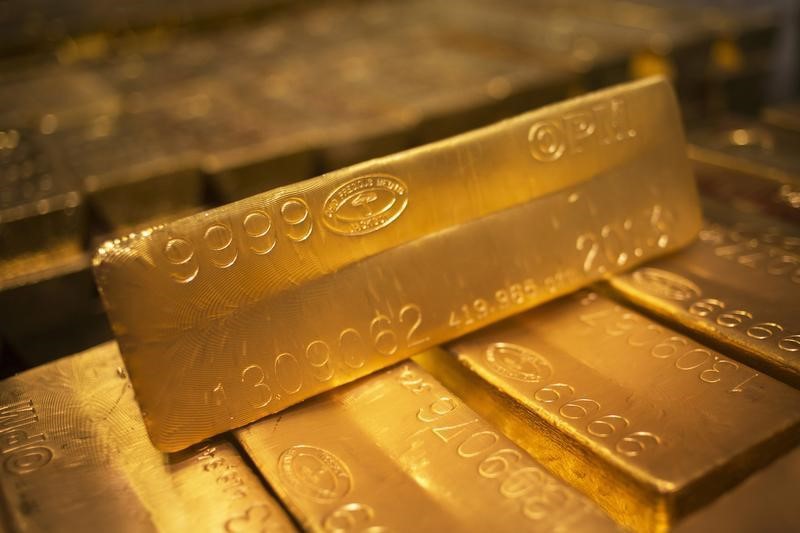Investing.com - Gold prices dipped in Asia on Monday despite heightened political risk in the Middle east with a surprise shakeup of Saudi Arabia's leadership.
Gold futures for December delivery sdipoped 0.02% to $1,268.97 a troy ounce on the Comex division of the New York Mercantile Exchange.
In weekend news, Saudi Arabia’s King Salman bin AbdelAziz, announced the formation of a ‘supreme committee chaired by Crown Prince (Mohammed bin Salman) and Chairman of the Monitoring and Investigation Commission, Chairman of the National Anti-Corruption Authority, Chief of the General Audit Bureau, Attorney General and Head of State Security’.
The move includes the reported detainment Prince Alwaleed bin Talal, whose Kingdom Holdings dropped 10% in trading on the Tadawul stock exchange on Sunday.
The White House statement said Sunday that Trump and Salman held a phone call discussing counterterrorism efforts, "the continuing threat of Iranian-backed Houthi militias in Yemen" and Saudi Arabia's interception of a missile fired from Yemen at its capital, Riyadh but the white house said nothing about whether the arrests were discussed.
Trump said he expects to meet with Russian President Vladimir Putin when the two world leaders cross paths in Southeast Asia. Trump said pressure on North Korea was the priority during his first official visit to the region.
In the week ahead, investors will continue to monitor the progress of the U.S. tax reform bill in what will be relatively quiet week for economic data. China is to release data on trade and inflation
Last week, gold prices fell to one-week lows on Friday as the dollar gained ground after upbeat U.S. factory orders and service sector data offset the impact of a weaker than expected employment report for October.
The dollar turned positive after U.S. factory orders and ISM non-manufacturing PMI data.
The Institute for Supply Management reported that its non-manufacturing purchasing managers’ index rose to its highest level since 2005.
Another report showed that new orders for U.S.-made goods rose for the second straight month in September and orders for core capital goods rose more than expected.
The reports underlined the case for the Federal Reserve to raise interest rates at a faster pace in the coming months. Higher rates tend to make the dollar more attractive to yield seeking investors.
The dollar had earlier fallen to its lows of the day after the release of October U.S. nonfarm payrolls, which came in below expectations.
The U.S. economy added 261,000 jobs in October, the Labor Department said, falling short of forecasts for 315,000 new jobs. The unemployment rate ticked down to 4.1%, its lowest level since December 2000.
Some investors believe the data was distorted by the effects of recent hurricanes in the U.S.
Investors were also focused on the proposed tax overhaul outlined by Republican lawmakers on Thursday.
Some traders believe tax reforms could bolster growth, adding pressure on the Federal Reserve to raise interest rates, known as the "Trumpflation" trade.
Gold is highly sensitive to rising rates, which lift the opportunity cost of holding non-yielding assets such as bullion, while boosting the dollar, in which it is priced.
